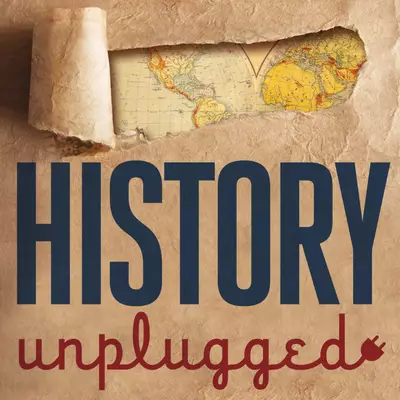Listen on Your Favorite App
The Rag-Tag Art Renegades that Brought Picasso and Modernist Art to the United States
September 15, 2022
00:00
50:13
Listen on Your Favorite App
Today we think of New York as the center of the twentieth century art world, but it took three determined men, two world wars, and one singular artist to secure the city’s cultural prominence. Pablo Picasso was the most influential and perplexing artist of his age, and the turning points of his career and salient facets of his private life have intrigued the world for decades. However, the tremendous feat of winning support for his art in the U.S. has long been overlooked.
To discuss this largely forgotten story is Hugh Eakin, author of Picasso’s War How Modern Art Came to America. He details the story of how a single exhibition, years in the making, finally brought the 20th century’s most notorious artist U.S. acclaim, irrevocably changed American culture, and in doing so saved dozens of the twentieth century’s most enduring artworks from the Nazis.
A small group of eclectic figures made this happen: the renegade Irish-American lawyer John Quinn and the mountain-girl-turned-foreign correspondent, Jeanne Foster; the art dealer and Paris kingmaker, Paul Rosenberg; the wunderkind museum founder Alfred Barr and his sharp-witted, Irish-Italian wife, Margaret Scolari. Working sometimes together and often at odds, they were determined to bring the radical art revolutions of Europe to the States, no matter what stood in their way. In the end, they would have to overcome political revolutions, bankruptcies, divorces, art seizures—and years of American cultural hostility before they could achieve their goal. Collectively, it would take the destruction of New York’s first great modern art collection and finally, the Nazis’ war on modernism to bring this twenty-year quest to its surprising conclusion.
To discuss this largely forgotten story is Hugh Eakin, author of Picasso’s War How Modern Art Came to America. He details the story of how a single exhibition, years in the making, finally brought the 20th century’s most notorious artist U.S. acclaim, irrevocably changed American culture, and in doing so saved dozens of the twentieth century’s most enduring artworks from the Nazis.
A small group of eclectic figures made this happen: the renegade Irish-American lawyer John Quinn and the mountain-girl-turned-foreign correspondent, Jeanne Foster; the art dealer and Paris kingmaker, Paul Rosenberg; the wunderkind museum founder Alfred Barr and his sharp-witted, Irish-Italian wife, Margaret Scolari. Working sometimes together and often at odds, they were determined to bring the radical art revolutions of Europe to the States, no matter what stood in their way. In the end, they would have to overcome political revolutions, bankruptcies, divorces, art seizures—and years of American cultural hostility before they could achieve their goal. Collectively, it would take the destruction of New York’s first great modern art collection and finally, the Nazis’ war on modernism to bring this twenty-year quest to its surprising conclusion.
See omnystudio.com/listener for privacy information.
More Episodes
See all episodes
Meet Your Host

Scott Rank is the host of the History Unplugged Podcast and a PhD in history who specialized in the Ottoman Empire and modern Turkey. Before going down the academic route he worked as a journalist in Istanbul. He has written 12 history books on topics ranging from lost Bronze Age civilizations to the Age of Discovery. Some of his books include The Age of Illumination: Science, Technology, and Reason in the Middle Ages and History’s 9 Most Insane Rulers.. Learn more about him by going to scottrankphd.com.
